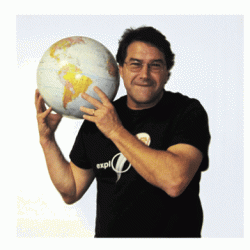Source Institutions
Source Institutions
Add to list Go to activity
Activity link broken? See if it's at the internet archive

In this activity, learners use basic measurements of the Earth and pieces of rock and iron to estimate the mass of the Earth. Learners will calculate mass, volume, and density, convert units, and employ the water displacement method. To calculate an even more accurate estimate of the mass of the Earth, this resource includes optional instructions on how to measure the iron core mass.
- Under 5 minutes
- 45 to 60 minutes
- free per student
- Ages 14 - 18
- Activity, Experiment/Lab Activity
- English
Quick Guide
Materials List (per student)
- A piece of rock (a chunk of basalt)
- A hammer
- Graduated cylinder
- Balance or digital scale that can read to the 1/10 of gram
- Source of geophysical facts to check your answers
- A diagram of the interior of the earth (optional)
- Pieces of iron (or steel nuts and bolts) (optional)
- Water
Subjects
-
Earth and Space Science
-
Earth Structure
- Rocks and Minerals
-
Earth Structure
-
Mathematics
-
Algebra
- Equations and Inequalities
- Variables and Expressions
-
Data Analysis and Probability
- Data Analysis
- Data Collection
-
Measurement
- Units of Measurement
- Size and Scale
- Circles
-
Number and Operations
- Exponents
- Fractions
- Multiples and Factors
- Operations
-
Algebra
-
Physical Sciences
-
Structure and Properties of Matter
- Mass and Weight
- Volume and Density
-
Structure and Properties of Matter
-
The Nature of Science
-
The Scientific Process
- Conducting Investigations
- Gathering Data
- Communicating Results
-
The Scientific Process
Informal Categories
- Nature and Environment
Audience
To use this activity, learners need to:
- see
- read
- touch
Learning styles supported:
- Involves hands-on or lab activities
Other
This resource is part of:
Access Rights:
- Free access
By:
- Muller, Eric
Rights:
- All rights reserved, Exploratorium, 2010
